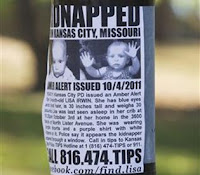Baby Lisa and the Superman Syndrome!
Baby Lisa’s parents have resisted the authorities attempts to re-interview Lisa’s half brothers, who were in the home when she was snatched, saying they were concerned for the boys’ well being. Tomorrow law enforcement will finally have an opportunity to re-interview the boys for the first time since she disappeared on October 3 or 4. The boys, eight and five-years-old, have only been interviewed for fifty and thirty-minutes respectively.
Wouldn’t it be to the children’s benefit to help solve the case rather than have suspicion focused on the family and an evil mystery lingering over their heads forevermore? Little boys long to be Batman, Superman or Captain America. They fantasize about “saving the day” and rescuing the damsel in distress. Baby Lisa’s brothers will never have a better chance to turn fantasy into reality than they have right now. They need to be talking about what they do or don’t know; trying to solve the case and understanding the evil that lurked within. Only then will they be able to mature knowing that they did everything that they could to help find their little sister.
There are viable techniques for interviewing children that are gentle, non-invasive, and non-threatening. Originally developed to draw out information from child sexual abuse victims without re-victimizing them, forensic interviewing of children has broad acceptance in the criminal justice community. Typically, a specially trained interviewer will sit down with child in a comfortable, home like setting. Oftentimes interviews are videotaped, and other interested parties including law enforcement, prosecutors, medical personnel and defense attorneys monitor the interview. This is to guarantee the interviewers objectivity, ensure that he/she employed non-leading techniques and that relevant case information was not overlooked. The goal of the interview will determine levels of victimization and elicit information that will stand up in court.
Translate »





